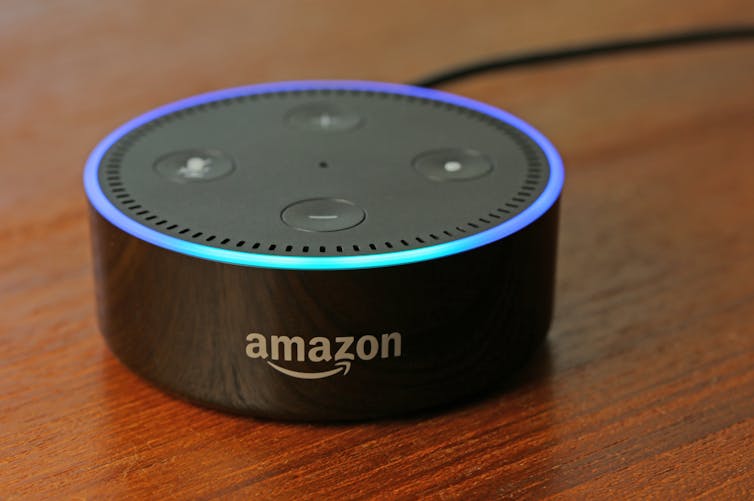Customer service staff need to be problem solving not apologising
- Written by Jagdip Singh, Professor of Marketing, Case Western Reserve University
Customers are good at troubleshooting the small stuff and research shows when they come to customer service staff they expect complex problem solving, options or answers - not apologies.
My research used video recordings of interactions between airline staff and customers to analyse the behaviour of both the staff and the passengers. I examined the non-verbal cues of the airline staff in more than 100 interactions and found that when they made effusive apologies it actually diminished their ability to be effective problem solvers.
Read more: Business Briefing: when robots and customers meet[1]
Businesses have been trying to be better at customer service since it was invented. But unfortunately it seems like they aren’t making much progress.
A 2017 study[2] showed that 62 million families in the US are estimated to report at least one service problem a year. This left 56% customers in a “rage” or extremely upset.
According to the same study, only 25% of the customers were able to resolve the service problem in one contact with the company. In fact, 19% reported having to contact the company more than seven times to resolve the problem. Despite this, 80% of the customers remained unhappy even after the resolution.
Cost of ineffective problem solving is estimated at US$313 billion in sales[3] for US businesses alone.
But below par customer service is not unique to US businesses. One Ernst-Young survey[4] showed that Australian consumers fare no better. 56% experienced unacceptably poor service in a 12-month period and 57% of those who complained were very or fairly dissatisfied with the way the problem was resolved. Also, 47% upset customers posted their complaint on social media but in 75% of the cases, the company didn’t respond.
The loss to Australian businesses from these problems: A$720 for every negative customer experience, and A$40 billion per year.
How customers are changing
Over time, the nature of customer’s problems have changed with the internet and social media.
Now customers prefer to solve simple and typical problems on their own using online resources provided by companies. My research shows they increasingly reach out to companies with complex, unexpected and urgent problems.
Customers are also now connected to a community of consumers who actively vocalise and report their service problems on social media. This community are increasingly aware and confident about the what (outcomes) and how (process) of problem solving.
A 2017 market research survey[5] of consumers in North America, found that consumers actively and increasingly use a range of self-service channels including FAQs (60%), online community forums (38%), online virtual agents (37%), mobile apps (35%) and chatbots (32%). Many of these options did not exist just a few years ago.
According to this same report, intelligent assistants like Google Assistant, Apple’s Siri and Amazon’s Alexa will make it easier for customers to use self-service options.
 Voice recognition assistants like this Amazon Echo will make it easier for customers to use developing self-service options.
shutterstock[6]
Voice recognition assistants like this Amazon Echo will make it easier for customers to use developing self-service options.
shutterstock[6]
Leading service organisations are developing and prototyping new artificial intelligence tools to respond to these trends. For instance, Vanguard, an investment advisor group, is piloting an artificial intelligence project to assist customer service staff answer questions and problems posed on inbound calls from customers.
Vanguard’s plan is to have customers engage directly with this bot and transition customer service staff to handle more complex activities.
What customer service providers should be doing
My research shows customer service staff should only empathise or apologise to customers in the first five to seven seconds before moving on to creative problem solving. We found customers view “small” talk in customer service interaction as a sign of ineffectiveness.
If customers are presented with options to solve their problem, my research shows, it gives them a sense of control over the difficult situation. In an experiment we conducted, customers were shown two scenarios, both of which were identical in nature. The problem involved a lost bag that contained materials and clothing for an important job interview.
The first scenario provided a single solution, while in the second scenario there were three reasonably comparable alternative solutions for the customer. At the end, the customer chose the same solution in both scenarios.
Our research found customers expressed greater satisfaction with the multiple choices of the second scenario. It’s the quality and quantity of the solutions given to customers that’s the crucial difference.
Read more: Martial arts training for airline staff is a new low for the budget flights industry[7]
Yet in many companies, service agents are directed, trained and monitored only to connect with customers and make them feel comfortable. This training is intuitive, easier to script, amenable to supervisory monitoring and suitable for standardised training.
By contrast, creative and problem solving is not intuitive or easy to train. This is the challenge for service companies.
Businesses must forgo the easy route to customer problem solving and take a more counter intuitive approach. By overcoming this challenge, business could see substantial payoffs and stem the financial losses that spring from bad customer experiences.
References
- ^ Business Briefing: when robots and customers meet (theconversation.com)
- ^ A 2017 study (www.forbes.com)
- ^ US$313 billion in sales (research.wpcarey.asu.edu)
- ^ Ernst-Young survey (www.ey.com)
- ^ 2017 market research survey (s3.amazonaws.com)
- ^ shutterstock (www.shutterstock.com)
- ^ Martial arts training for airline staff is a new low for the budget flights industry (theconversation.com)
Authors: Jagdip Singh, Professor of Marketing, Case Western Reserve University
Read more http://theconversation.com/customer-service-staff-need-to-be-problem-solving-not-apologising-91646




